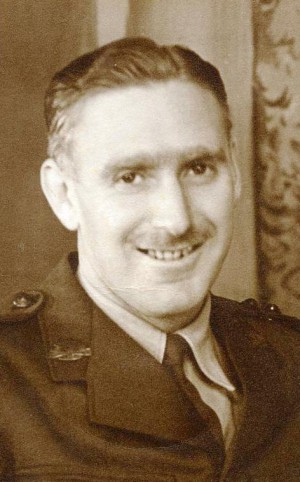Service Details
- Branch of Service
- Army
- Conflict
- World War II (1939-1945)
- Date of Enlistment
- 01/06/1943
- Place of Enlistment
- Port Moresby, Papua
Personal Details
- Gender
- Male
- Date of Birth
- 04/11/1912
- Place of Birth
- Goulburn NSW
- Address (at enlistment)
- North Sydney NSW
- School(s) Attended
- Canberra Grammar School
- Occupation
- Patrol Officer
- Next of Kin
- Son of Henry and Emily Pursehouse; husband of Cecilia Mary Pursehouse.
Unit and Rank Details
- Service Number
- PX178
- Final Rank
- Captain
- Final Unit
- M Special Unit AIF
Fate
Died 17 January 1944 aged 31 years, killed in action New Guinea.
Commemoration
AWM Roll of Honour, Canberra ACT: Panel 11.
Lae Memorial, Papua New Guinea: Panel 2.
Canberra Grammar School. Roll of Honour 1939-45; and memorial window in school chapel.
Notes
Pursehouse was school captain at Canberra Grammar in 1930 and became a member of the Citizen Military Force. The 1936 edition of 'The Canberran' reports that Pursehouse was stationed at Angoram (on the Sepik River) near Wewak in New Guinea. The 1938 edition refers to 'Chook' Pursehouse developing middleaged spread and "after doing a year's Anthropology at Sydney University he's now gone back to New Guinea."
Pursehouse arrived in Wabag, New Guinea in January 1939 as a Patrol Officer on the Hagen-Sepik Patrol. During the war he was a coastwatcher stationed at Finschhafen in New Guinea when he first observed Japanese aircraft headed for Lae and Salamaua on 21 January 1942. The Japanese captured Rabaul on 22-23 January 1942. His position was discovered on 8 March 1942 and he signed off over the radio: "This is my last message - I'm off". He then walked for six weeks through the jungle to safety. He enlisted in M Special Force when it was formed in 1943 and operated in the Finschhafen area for a while at a forward observation post overlooking the Vitiaz Strait from where he could observe and report on Japanese shipping. He was killed in action near Sio, New Guinea on 17 January 1944 while attached to 2/17 Battalion.
M Special Unit took on the role of the coastwatchers but it also gathered intelligence by sending small teams behind enemy lines, infiltrating by sea, air or land.
The Lae Memorial was designed to commemorate officers and men of the Royal Australian Army, the Australian Merchant Navy and the Royal Australian Air Force who lost their lives in operations in the area, and who have no known grave.
Sources
Australia. Department of Veterans' Affairs. World War 2 nominal roll. <http://www.ww2roll.gov.au/>
Commonwealth War Graves Commission. Debt of Honour Register. <http://www.cwgc.org/cwgcinternet/search/>
P.J. McKeown (ed.), 'Deo, Ecclesiae, Patriae - Fifty Years of Canberra Grammar School', ANU Press Canberra, 1979 (p.43)
'The Canberran : Magazine of Canberra Grammar School', 1936 (p.33),1938 (p.43), 1941 (p.3)
Ian Downs, 'The New Guinea Volunteer Rifles: NGVR 1939-1943 a history', 1999, (pp.121, 147)
Phillip Bradley, 'To Salamaua', 2010
Adrian Keenan, 'Catching the Vision' 1997
Image courtesy of Pamela Hunt, Canberra Grammar School archives
Wikipedia entry http://en.wikipedia.org/wiki/M_Special_Unit
